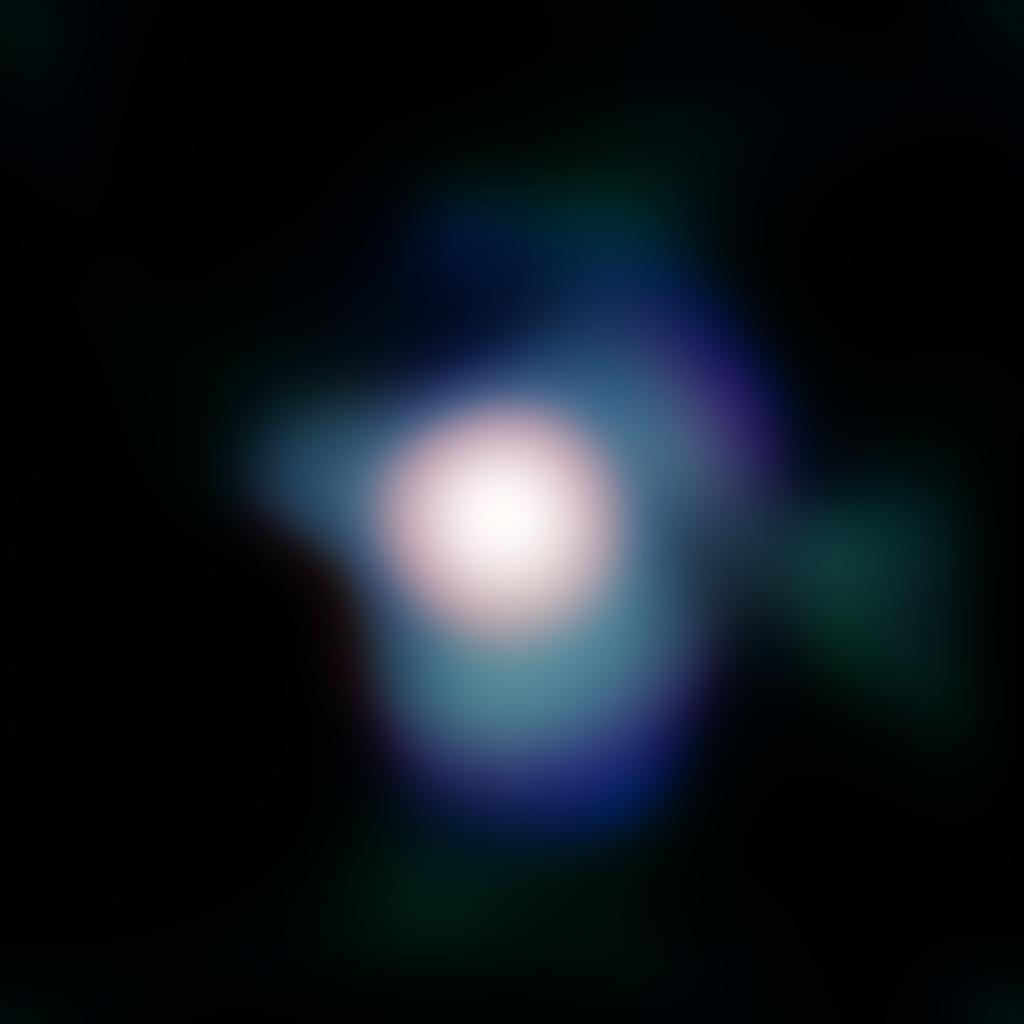
Betelgeuse, also known as Alpha Orionis, is one of the most massive and luminous stars visible to the naked eye. Located about 640 light-years from Earth in the constellation Orion, it marks the left shoulder of the celestial hunter. This red supergiant has a radius about 900 times that of the Sun, easily encompassing the orbit of Mars if it were at the center of our solar system. Its mass, estimated between 10 and 20 solar masses, places it among the giants that will end their lives in a cataclysmic event: a supernova.

As a red supergiant of spectral type M1-2 Ia, Betelgeuse left the main sequence several hundred thousand years ago. It has already exhausted the hydrogen in its core, leading to the cessation of central proton-proton fusion. Gravity then contracted the core, increasing its temperature to initiate the fusion of helium into carbon and oxygen via the triple-alpha process. Around this helium-fusing core are concentric layers where progressively lighter fusion reactions occur as one moves away from the center: carbon, neon, oxygen, and residual hydrogen layers at the periphery. This onion-skin structure is characteristic of massive stars in their final stages.
The extreme thermal gradients generated between these layers cause very powerful convective currents, transporting not only energy but also heavy elements to the surface. These convective cells, of colossal size (sometimes equivalent to a quarter of the star's radius), induce dynamic variations in the photosphere, visible from Earth as brightness irregularities. Moreover, Betelgeuse shows semi-regular pulsations due to temporary hydrostatic imbalances between radiation pressure and gravity, leading to variations in radius and effective temperature over periods of a few hundred days.
The spectacular dimming observed between late 2019 and early 2020, known as the Great Dimming, highlighted the complexity of the atmospheric phenomena of these supergiants. Two main explanations have been proposed: a local temperature drop linked to extreme convection or an internal shock wave temporarily altering the effective temperature of the photosphere; and the ejection of a dense, dusty gas plume that, upon condensing into silicates at low temperatures, temporarily obscured part of the stellar disk by absorbing visible light. This latter hypothesis is supported by infrared and polarized observations that revealed a dust cloud forming near the line of sight.
This erratic behavior is typical of stars nearing gravitational collapse. With an initial mass estimated between 15 and 20 solar masses, Betelgeuse is destined to end its life as a Type II supernova, perhaps within the next 100,000 years. Monitoring its luminosity variations thus offers a unique window into the final stages of massive star evolution, where plasma physics, fusion layer dynamics, and radiative instabilities combine to produce spectacular and still imperfectly understood phenomena.
Betelgeuse's fate is sealed: when iron accumulates in its core, preventing any further exothermic fusion, gravitational pressure will take over. In a fraction of a second, the core will collapse, generating a shock wave that will shatter the outer layers in a Type II supernova. This explosion will release as much energy as an entire galaxy for several days. If it occurs in the next few millennia, the event would be visible even in daylight from Earth, though it would pose no danger, as Betelgeuse is too far away for the radiation to significantly affect our biosphere.

The study of Betelgeuse helps us better understand the terminal phases of massive stars. Through interferometry, infrared observations, and hydrodynamic modeling, astrophysicists probe the interior of this red giant and its convective phenomena, pulsations, and mass loss. Betelgeuse teaches us that even the seemingly most stable stars are subject to colossal internal dynamics, heralding a violent but also formative transformation, as supernovae enrich the interstellar medium with heavy elements, the ingredients of life.
One of the most direct methods for estimating the physical radius of a nearby star like Betelgeuse is through optical interferometry. This technique allows measuring the angular diameter of the star, i.e., the angle at which its diameter is seen from Earth. By combining this data with the star's distance, we obtain an estimate of its actual radius using purely trigonometric geometry.
The radius R of the star is obtained by the relation:
R = (d × θ) / 2
R = (6.07 × 1018 m × 2.04 × 10−7) / 2 ≈ 6.2 × 1011 m
This radius corresponds to approximately:
R / R☉ ≈ (6.2 × 1011) / (6.96 × 108) ≈ 891 R☉
Interferometric analysis places Betelgeuse's radius at about 890 times that of the Sun. This value, very consistent with other indirect methods, confirms the status of this star as a red supergiant, whose diameter is comparable to Jupiter's orbit in the Solar System.
Our Sun is really very small compared to some stars. The planets are but dust compared to the Blue and Red Giants of our universe. In this YouTube video, the relative sizes of the planets and stars are presented from smallest to largest. The video first shows our Moon, the planets of our solar system arranged in order of increasing size, then the Sun. Then the largest stars in our galaxy will appear. Their approximate sizes have been calculated from their luminosities, temperatures, themselves deduced from their colors, and their distances.